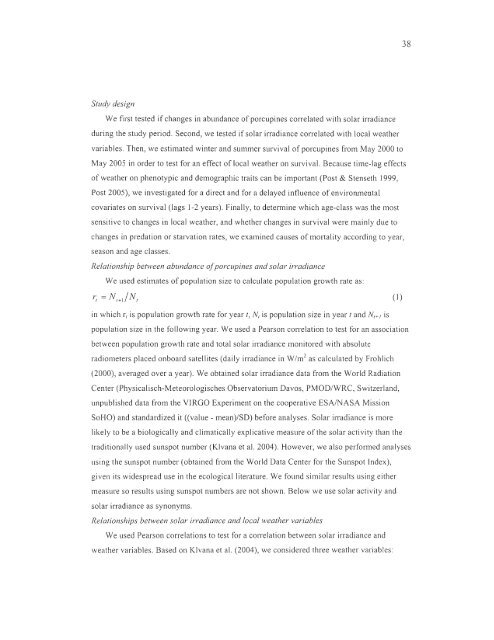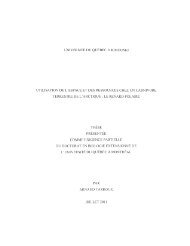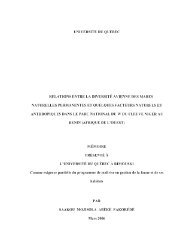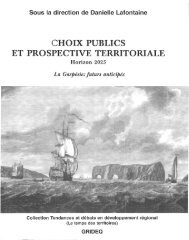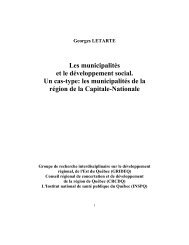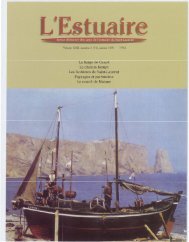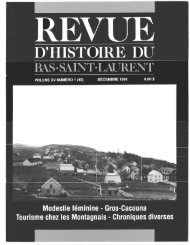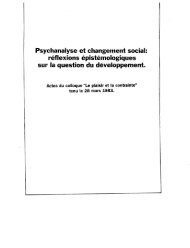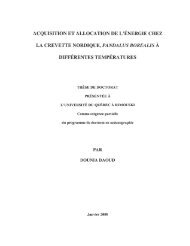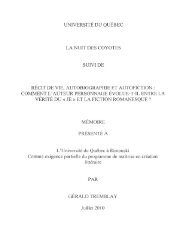influence du climat et de la prédation sur l'utilisation de l'habitat et la ...
influence du climat et de la prédation sur l'utilisation de l'habitat et la ...
influence du climat et de la prédation sur l'utilisation de l'habitat et la ...
Create successful ePaper yourself
Turn your PDF publications into a flip-book with our unique Google optimized e-Paper software.
38<br />
Study <strong>de</strong>sign<br />
We first tested if changes in abundance of porcupines cone<strong>la</strong>ted with so<strong>la</strong>r irradiance<br />
<strong>du</strong>ring the study period. Second, we tested if so<strong>la</strong>r irradiance cone<strong>la</strong>ted with local weather<br />
variables. Then, we estimated winter and summer <strong>sur</strong>vival of porcupines from May 2000 to<br />
May 2005 in or<strong>de</strong>r to test for an effect of local weather on <strong>sur</strong>vival. Because time-<strong>la</strong>g effects<br />
of weather on phenotypic and <strong>de</strong>mographic traits can be important (Post & Stens<strong>et</strong>h 1999,<br />
Post 2005), we investigated for a direct and for a <strong>de</strong><strong>la</strong>yed <strong>influence</strong> of environmental<br />
covariates on <strong>sur</strong>vival (<strong>la</strong>gs 1-2 years). Finally, to d<strong>et</strong>ermine which age-c<strong>la</strong>ss was the most<br />
sensitive to changes in local weather, and wh<strong>et</strong>her changes in <strong>sur</strong>vival were mainly <strong>du</strong>e to<br />
changes in predation or starvation rates, we examined causes of mortality according to year,<br />
season and age c<strong>la</strong>sses.<br />
Re<strong>la</strong>tionship b<strong>et</strong>ween abundance of porcupines and so<strong>la</strong>r irradiance<br />
We used estimates of popu<strong>la</strong>tion size to calcu<strong>la</strong>te popu<strong>la</strong>tion growth rate as:<br />
r f = N f + 1 /N f<br />
(1)<br />
in which r f is popu<strong>la</strong>tion growth rate for year t, Nf is popu<strong>la</strong>tion size in year t and N f + / is<br />
popu<strong>la</strong>tion size in the following year. We used a Pearson corre<strong>la</strong>tion to test for an association<br />
b<strong>et</strong>ween popu<strong>la</strong>tion growth rate and total so<strong>la</strong>r irradiance monitored with absolute<br />
radiom<strong>et</strong>ers p<strong>la</strong>ced onboard satellites (daily irradiance in W/m 2 as calcu<strong>la</strong>ted by Frohlich<br />
(2000), averaged over a year). We obtained so<strong>la</strong>r irradiance data from the World Radiation<br />
Center (Physicalisch-M<strong>et</strong>eorologisches Observatorium Davos, PMOD/WRC, Switzer<strong>la</strong>nd,<br />
unpublished data from the VIRGO Experiment on the cooperative ESA/NASA Mission<br />
SoHO) and standardized it ((value - mean)/SD) before analyses. So<strong>la</strong>r irradiance is more<br />
likely to be a biologically and <strong>climat</strong>ically explicative mea<strong>sur</strong>e of the so<strong>la</strong>r activity than the<br />
traditionally used sunspot number (Klvana <strong>et</strong> al. 2004). However, we also perfonned analyses<br />
using the sunspot number (obtained from the World Data Center for the Sunspot In<strong>de</strong>x),<br />
given its wi<strong>de</strong>spread lise in the ecological literature. We found simi<strong>la</strong>r results using either<br />
mea<strong>sur</strong>e so results using sunspot numbers are not shown. Below we use so<strong>la</strong>r activity and<br />
so<strong>la</strong>r inadiance as synonyms.<br />
Re<strong>la</strong>tionships b<strong>et</strong>ween so<strong>la</strong>r irradiance and local weather variables<br />
We used Pearson corre<strong>la</strong>tions to test for a corre<strong>la</strong>tion b<strong>et</strong>ween so<strong>la</strong>r irradiance and<br />
weather variables. Based on Klvana <strong>et</strong> al. (2004), we consi<strong>de</strong>red three weather variables:


